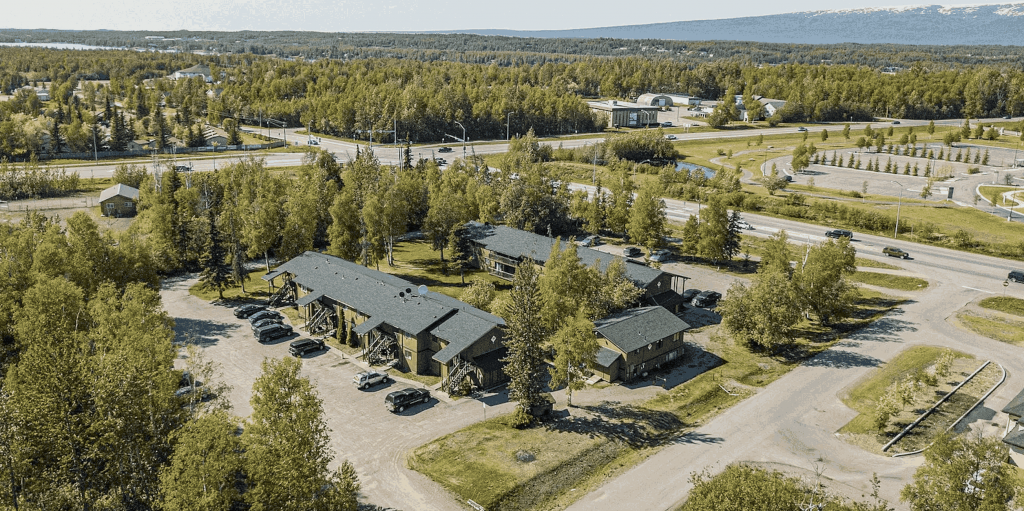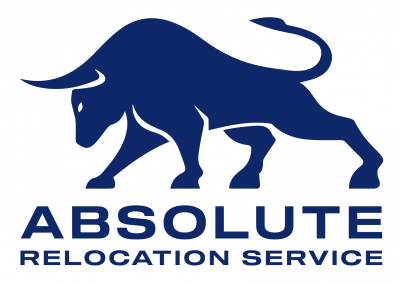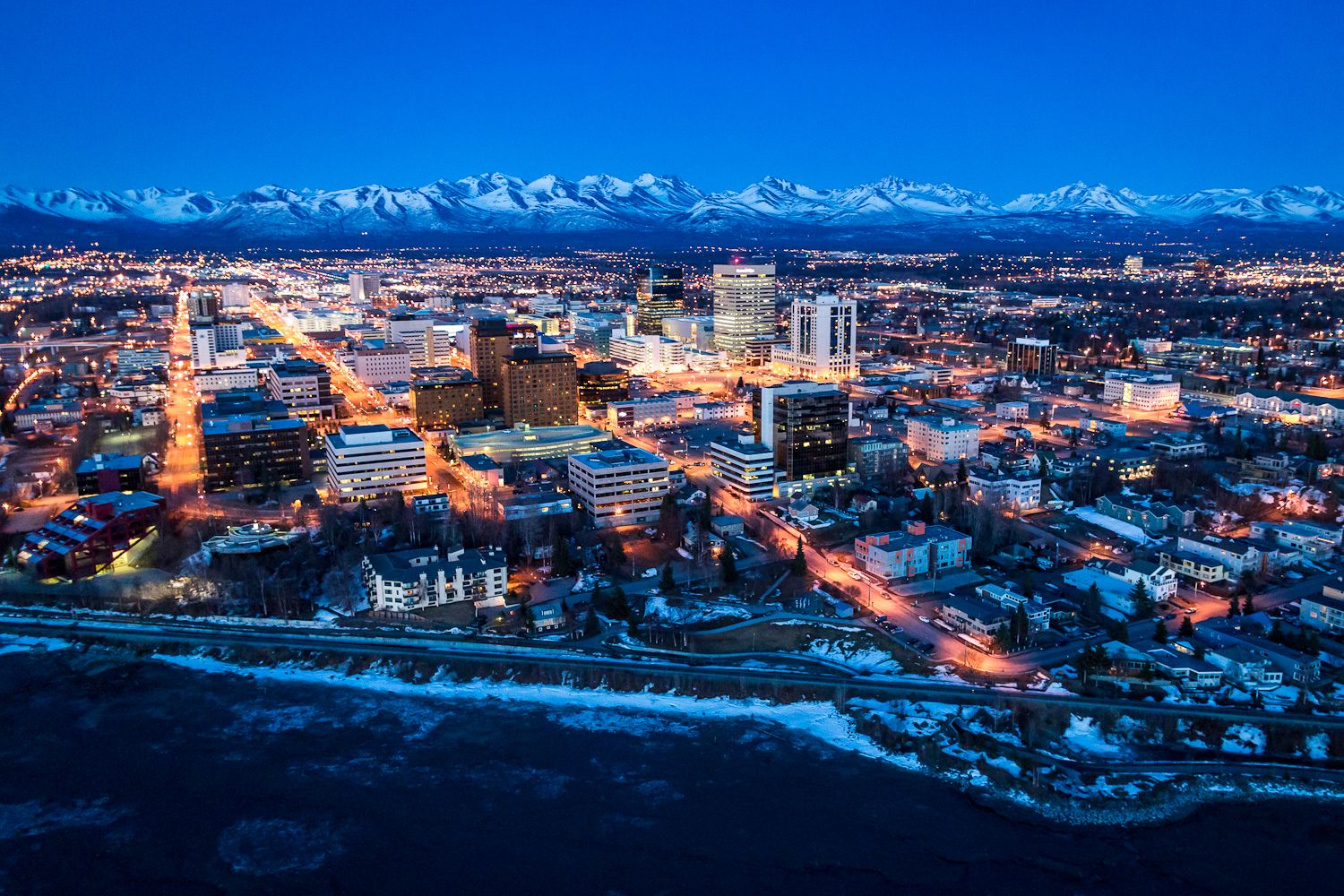Alaska real estate: useful tips for moving
Alaska, with its large-scale glaciers, mountain peaks, and boundless expanses of taiga and tundra, attracts the attention of both travellers and those who seek to acquire a home in this unique corner of the world. The property market in Alaska has its own peculiarities, determined not only by the natural surroundings, but also by the unique living conditions. Finding a home in Alaska can be challenging due to the distance from civilisation, especially in remote areas, as well as the diverse climate and landscape, which ranges from frosty coastlines to rugged mountain ranges.
Understanding the Alaska property market and knowing how to choose the right home is crucial not only for those who are looking to move to the state, but also for those planning a short-term stay. Making the wrong housing choice can lead to frustration and inconvenience, so it is important to be informed and careful when making a decision. In this article, we will look at the main aspects of the Alaska real estate market, the key factors to consider when choosing a home, and how these decisions affect travellers moving and those who have already secured property in this amazing part of the world.
Alaska real estate market

The property market in Alaska is a diverse environment with unique characteristics in different regions of the state. It is important to note that there is demand in Alaska for both short-term housing for tourists and permanent housing for locals.
Central and southern Alaska areas such as Anchorage and Fairbanks offer a wide range of properties for both tourists and permanent residents. Housing prices are often higher in these cities due to their proximity to major centres and amenities such as shopping, restaurants and entertainment venues. Tourist accommodation in central areas is usually hotel rooms, rental flats or short-term homes. At the same time, locals often prefer homes with large lots or flats in high-rise buildings.
In remote areas of Alaska, such as Alaskan towns and villages, Kodiak, Juneau and others, the property market is more sparse and specific. Here, housing prices can be higher due to limited access to resources and services. Tourist housing in these areas is often represented by campgrounds, hotels, or rented cottages. For locals, housing may be in the form of small houses, cottages or apartments.
Factors affecting housing prices in Alaska include distance from major cities and employment centres. The closer housing is to cities, the higher the prices due to greater demand and availability of amenities. Climate conditions can also affect housing prices, especially in remote areas where heating and energy costs can be higher. The availability of services such as health services, schools and shops can also influence house prices, especially for families with children or the elderly.
Accommodation Search

The search for housing in Alaska can be varied and depends on the needs and preferences of each individual, whether you are a tourist, a local resident, or someone moving permanently from another country. When choosing accommodation, it is important to consider not only price and location, but also such criteria as safety of the area, quality of housing, availability of amenities and communications (water, electricity, internet), as well as the peculiarities of the climate, which may vary in different regions of Alaska.
Various options of temporary accommodation are available for tourists. These can be hotels, inns, motels, apartments or cottages, offering comfortable accommodation for a short period of time. It is important to choose accommodation considering its location in relation to tourist sites and amenities such as accessibility to public transport and food.
Locals most often prefer permanent accommodation that suits their needs and lifestyle. In urban areas, these options may include flats in high-rise buildings or houses in the suburbs. In remote areas where access to services and resources may be limited, locals are more likely to choose detached houses or cottages that provide more space and privacy.
Those moving permanently from other countries also have a variety of housing options available in Alaska. These can range from renting flats or houses to buying a property. It is important to consider location, proximity to work or school, and living conditions such as shopping, medical facilities, and public transport.
Ways to search for homes in Alaska include contacting real estate agents, using online platforms, looking at local listings and participating in communities. Real estate agents can offer a wide range of housing options and help find the best option to suit the client’s requirements. Online platforms such as Zillow or Realtor.com also offer extensive property databases that can be filtered by various parameters. Local adverts in newspapers or supermarket notice boards can also be a useful source of information about affordable housing. In addition, in today’s world, social media and online communities are becoming an increasingly popular housing search tool where people can share information and recommendations.

In different regions of Alaska, rental and purchase prices can vary significantly due to a variety of factors such as demand, supply, availability of services and infrastructure. Let’s take a look at prices in a few typical regions:
Urban areas (e.g., Anchorage, Fairbanks)
- Renting a flat: On average, the rental price for a one-bedroom flat in urban areas can range from $800 to $1500 per month, depending on square footage, condition, and location.
- Buying a flat: The cost of buying a one-bedroom flat in these areas can start at $100,000 and up, depending on square footage and amenities.
- Renting a house: Renting a home in urban areas can cost anywhere from $1500 to $3000 per month depending on size, condition, and amenities.
- Buying a house: Prices to buy a home in urban areas can range from $200,000 to millions of dollars, depending on square footage, condition, and location.
Remote areas (small towns and villages in Alaska)
- Renting a flat: In remote areas, flat rental prices may be lower, but quality and amenities may be limited. The average price for a one-bedroom flat can range from $500 to $1,000 per month.
- Buying a flat: Property prices may be lower, starting at $50,000 for a one-bedroom flat.
- Renting a house: The cost of renting a house in the villages can range from $1,000 to $2,000 per month depending on size and amenities.
- Buying a house: Prices for buying a house in remote areas are usually lower than in urban areas, starting at $100,000 and up.
Realtor Services
- Realtor services usually include commission fees that range from 5% to 7% of the sale price of the property. For example, if the home is valued at $300,000, commissions can range from $15,000 to $21,000.
- Additional fees may also be charged for property appraisal services, document preparation, etc.
Housing Utilities
- In urban areas, the cost of housing and utilities may be higher due to greater demand and availability of amenities. For example, the average electricity and heating bill can be around $150-200 per month during the winter.
- In remote areas, utility prices may be higher due to limited availability and transportation of resources. For example, electricity and heating bills can range from $200 to $300 per month.
These prices and costs can vary greatly depending on the specific region, the condition of the property and other factors. Before making a decision to buy or rent a home, it is advisable to contact local professionals and realtors for more accurate information on prices and conditions.
Planning a local move

Planning a local move in Alaska involves several key steps that will help ensure a successful and safe move.
Needs Assessment
The first step is to determine your moving needs and requirements. This includes determining the volume of items to be moved, estimating the size and weight of furniture, and considering the specifics of transporting fragile or valuable items.
Selecting a local mover
It is recommended that you contact local movers who have experience in Alaska and are familiar with the local infrastructure and climate. This will help ensure that items are transported more efficiently and safely.
Route Planning
You should plan your moving route, taking into account distances, road conditions, and possible restrictions. In Alaska, some areas may not be accessible during certain times of the year due to weather conditions, so seasonal considerations must be made. The cost of a move depends on several factors, including the distance between locations, the total volume of belongings, the services of the mover, and the cost of storage services. For example, a move within the same city can cost anywhere from $500 to $2000, depending on the volume and distance.
Packing and preparing your belongings
Before moving, you should pack your belongings securely and in an organised manner. This includes using the right packing materials, labelling boxes and items, and protecting fragile and valuable items.
The following set of packing materials may be required for a localised move:
- Boxes: Determine the number of rooms and the volume of your belongings. Typically, 10 to 20 boxes of varying sizes are needed per room.
- Bubble paper or stretch film: Needed for packing fragile items such as crockery, glass, frames and mirrors. Usually several sheets of bubble paper are needed for one large fragile item.
- Newspapers or soft materials: Can be used to pack delicate items such as clothes, books or upholstered furniture.
- Corrugated cardboard: Can be used to protect corners of furniture and fragile parts, and to reinforce boxes.
- Scotch tape: It is recommended to have several rolls of scotch tape for securing packing materials and taping boxes.
- Marking pens and labels: Help to label boxes with contents to make unloading and unpacking easier.
- Stretch Wrap: Can be useful for packing furniture and large items to prevent damage and secure items during transport.
Warehousing Services
If you need to temporarily store your belongings before or after the move, you can use warehousing services. Many local movers provide such services, which ensures that your belongings are stored conveniently and safely.
Time Planning
It is important to schedule your move precisely, taking into account all the steps and necessary procedures. This will help avoid rushing and unnecessary delays, ensuring a smooth and organised move.
Time estimation and scheduling
Start by estimating the total time that will be required for each stage of the move, from preparation to completion of the move. Based on the time estimate, create a detailed schedule including dates and time slots for each phase. Consider not only the move itself, but also the preparation for the move, packing, unloading, unpacking, and setting up at the new location.
Breakdown into phases
Divide the move into specific phases with start and end dates for each phase. For example, set a date to start packing, a date to file a change of address notice, a date to transport belongings, etc.
Prioritise tasks
Prioritise tasks and set deadlines for completion. Some tasks may be more critical and require tighter deadlines than others.
Accounting for unexpected circumstances
Remember that unexpected circumstances may arise that can affect your plan. Take time to consider the instances when something could go wrong and provide contingency plans.
Monitor and update regularly
It is important to monitor your plan and update it regularly if necessary. Communicate with your mover and others involved in the move to make sure everything is going according to plan.
It is also important to consider the specific climate and terrain of Alaska when planning a local move. Abrupt weather changes, difficult road conditions, and the remoteness of some areas can affect the moving process. Therefore, it is important to contact experienced professionals and follow recommendations to ensure a successful and safe move in Alaska.
Planning an international relocation

Planning an international move to Alaska is a multi-fold process that requires careful organisation and understanding of all the necessary procedures and formalities.
Documents
Before starting your international move, you need to make sure that you have all the necessary documents. These include your passport, visa (if required), work permit or residence permit. Customs documents and an inventory list may be required for transporting personal belongings.
Customs formalities
Crossing the border with your belongings also involves customs procedures. It is important to research customs regulations and restrictions in advance to avoid problems when entering the country. Contact the customs authorities for details. When crossing the border with belongings into Alaska, there may be some non-obvious restrictions and requirements that are important to know about in advance:
- Food Restrictions: Certain foods, especially meat and dairy products, may be prohibited for entry into Alaska due to the risk of spreading animal diseases. Before travelling, familiarise yourself with the list of permitted and prohibited foods and the documentation required to import permitted foods.
- Plants and Animals: Importation of certain species of plants and animals may be prohibited or require special authorisation. This applies to both live and souvenir species. It is advisable to familiarise yourself with import requirements and regulations before travelling.
- Alcohol and Tobacco: The importation of alcohol and tobacco into Alaska is also regulated by law. The amount and type of goods that can be brought in may be limited. You should familiarise yourself with the applicable regulations and restrictions before travelling.
- Medications: Some medications may be prohibited or require special authorisation. It is recommended that you familiarise yourself with the regulations governing the importation of medicines and carry the appropriate prescriptions or documents with you before travelling.
Transport between continents
Transporting personal effects over long distances requires the specialised services of international carriers. Choose a reliable and experienced carrier who will provide the necessary services to pack, transport and deliver your belongings to your destination.
Purchase of housing for foreign nationals
Foreign nationals have the ability to purchase housing in Alaska. Payment can be made either in cash or through a mortgage programme. Certain documents and proof of income are required to qualify for a mortgage.
Mortgage lending to purchase a home in Alaska is available to foreign nationals, but requires certain conditions to be met and appropriate documents to be provided. Here is general information about possible mortgage terms in Alaska:
- Interest Rates: Interest rates for mortgage loans in Alaska can vary depending on the bank, the size of the down payment, the term of the loan and the borrower’s credit history. They typically range from 3% to 5% per annum. Here are some of the major banks that provide mortgage loans: Alaska USA Federal Credit Union, First National Bank Alaska, Wells Fargo, KeyBank, and Northrim Bank.
- Down Payment: Typically, banks require a down payment of 10% to 20% of the home’s value. However, foreign nationals may have higher down payment requirements.
- Loan Term: The term of a mortgage loan in Alaska usually ranges from 15 to 30 years. For foreign nationals, the loan term may be limited depending on their residency status.
- Income and Credit History: In order to qualify for a mortgage loan, you must provide proof of income and credit history. Foreign nationals may require additional documents such as a work permit or visa.
- Insurance: A prerequisite for obtaining a mortgage loan is often property insurance against damage and life insurance for the borrower.
- Additional costs: In addition to the interest on the loan, there may be additional costs such as bank fees, property valuation, legal fees and taxes when buying a home with a mortgage.
- Programmes for foreign investors: In some cases, there are special mortgage lending programmes for foreign investors that may offer more favourable terms in terms of interest rates and loan terms.
Home Registration
After purchasing a home, you must register, this may require additional documents and visits to local authorities.The following procedures, organisations and documents may be required when you register your home and get a residence permit:
Local Housing Authority: You will usually need to go to the Local Housing Authority to register your home and get a residence permit. You may need to provide the following documents:
- A tenancy agreement or certificate of ownership for your home.
- Documents that prove your identity, such as a passport or ID card.
- Income certificate or other documents proving your financial stability (if you are applying for a residence permit for your own home).
Local government or municipal authorities: Depending on the rules in your area, you may need to visit the local government or municipal authorities to register your residence. Some organisations may require additional documents such as:
- Marriage or divorce certificate (if applicable).
- Documents proving the presence of children (if applicable).
- Documents related to the national migration service (if you are a foreign citizen).
Local Immigration and Citizenship Office (Local Immigration and Citizenship Office): If you are a foreign national, you may be required to visit the local Immigration and Citizenship Office to apply for a residence permit and obtain the relevant documents. Additional documents may include:
- Visa or residence permit.
- Documents proving your status as an immigrant or refugee.
This is just a general list of procedures, organisations and documents that may be required when registering your home. It is advisable to contact local offices and authorities for detailed information on the requirements and procedures in your specific region.
Currency exchange
When moving internationally, it is important to exchange currency correctly to minimise exchange rate losses. When exchanging currency in large amounts, consider to follow the recommendations of financial experts to minimise exchange rate losses. Here are some recommendations:
- Choose a bank with the best terms and conditions: Compare the conditions of different banks and exchange offices before exchanging. Pay attention to exchange fees and exchange rate differences. Sometimes banks offer special conditions for exchanging large amounts.
- Use pre-orders: Some banks offer a service of pre-ordering currency at a more favourable rate. This can be useful when exchanging large sums of money, as it allows you to fix the exchange rate in advance.
- Consider using specialised services: There are online platforms and services that offer currency exchange at more favourable rates, especially for larger amounts. However, before using such services, make sure they are reliable and safe.
- Take into account commissions and hidden costs: When exchanging currency in large amounts, consider not only the exchange rate, but also the commissions and possible hidden costs. Some banks may charge additional fees for exchanging large amounts.
- Get advice from a financial adviser: If necessary, consult a financial adviser or foreign exchange expert. They can help you develop a currency exchange strategy tailored to your individual needs and goals.
Recommendations for choosing movers and arranging your move
When choosing an international mover, consider their experience, reputation and licences. Contact professionals who can help you plan and organise your move, taking into account all the specifics and requirements.
International relocation to Alaska is a complex and responsible process that requires careful preparation and professional approach. Plan every step in advance, take into account all the peculiarities and contact experienced professionals to ensure a successful relocation.
Conclusion

When planning a move to Alaska, it is important to consider all aspects, from preparation and time planning to choosing a carrier and customs formalities. The specifics of international relocation such as paperwork, currency exchange and housing registration should be taken into consideration.
It is important to remember that professional relocation assistance can make the whole process much easier. Our company, Absolute Relocation Service, is ready to provide our services for both local and international relocation to Alaska. We have years of experience and professional expertise in the moving industry, ensuring that your move is safe and secure.
So, a properly organised move to Alaska combined with professional support can make the process much easier and safer. We hope that our tips will help you make your move a pleasant and worry-free experience.
Contact us in any way:
Telephone: (954) 773-9667
E-mail: abs@absoluteinc.org






